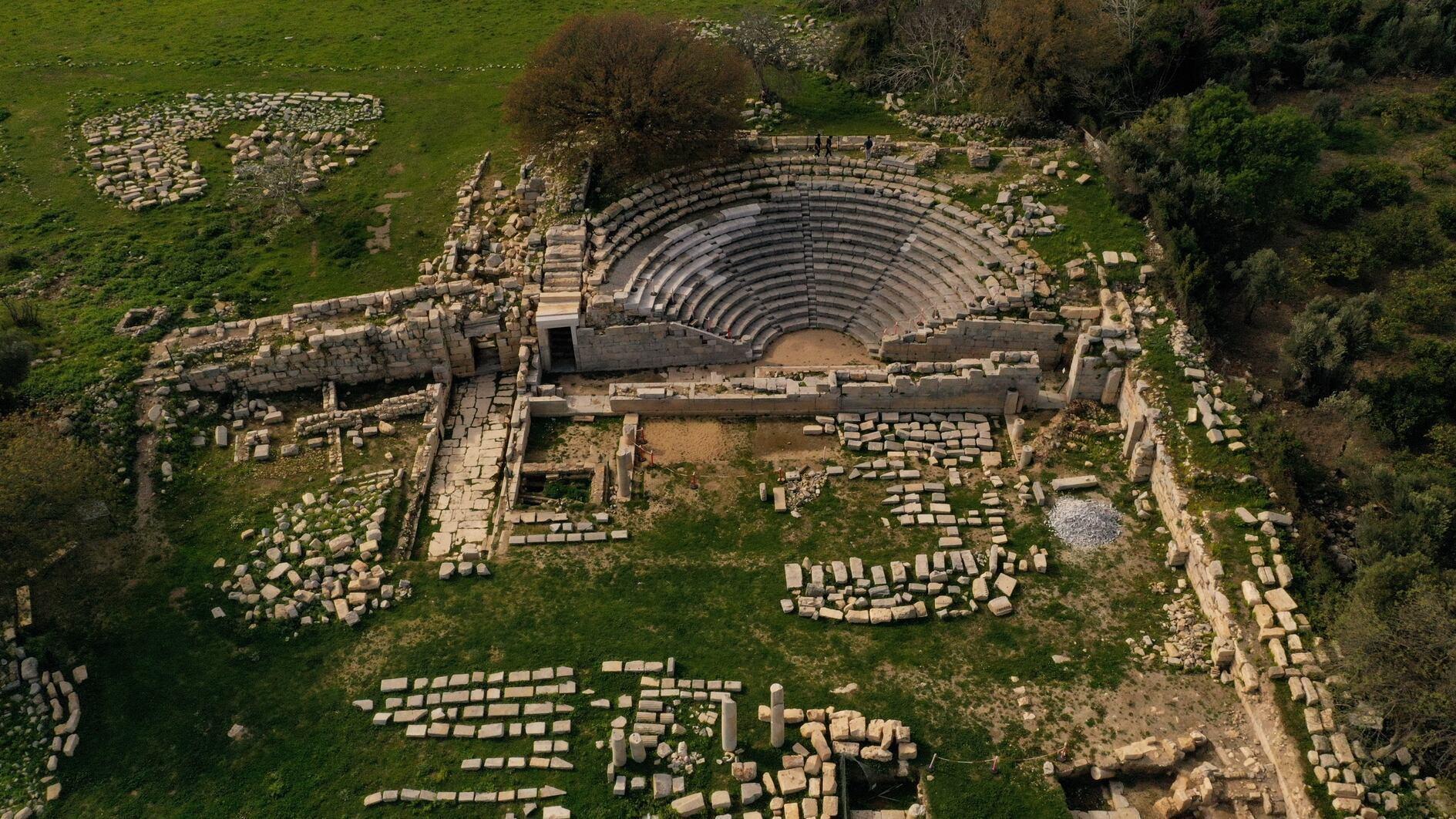
The ancient city of Teos, situated in the western province of İzmir and famed as a vibrant cultural hub of antiquity — particularly for its ties to the Dionysian Artists’ Guild, which included poets, musicians and actors — is now undergoing an extensive and revitalizing restoration effort.
As part of the Culture and Tourism Ministry’s Heritage for the Future project, archaeologists are working to restore and re-erect the temple columns of the city’s most significant structure — the Temple of Dionysus.
The ongoing excavation and restoration efforts, led by Musa Kadıoğlu from Ankara University’s Faculty of Language, History and Geography, aim to revive Teos’s historical grandeur.
“We have begun assembling the columns surrounding the Temple of Dionysus, which is the most prominent structure in the city.This temple, constructed in the second century BCE, is the largest dedicated to Dionysus in Anatolia,” he shared.
Designed by the Hellenistic architect Hermogenes, the temple is now being reconstructed for its accessibility and appeal.
“Our goal is to make Türkiye’s largest Dionysian temple more comprehensible to visitors. There were certain structural and design issues, many of which we have resolved. We have now reached the publication stage of our research and plan to partially restore the temple to increase its touristic appeal,” Kadıoğlu stated.
The restoration team is focusing on the temple’s 26-column peristyle, with ten of these columns, along with their superstructures, being reconstructed.
“By reassembling these elements in a three-dimensional manner, we aim to offer visitors a clearer understanding of the temple’s original form,” he added.
Teos’s historical significance extends beyond architecture. As one of the twelve Ionian cities, it played a crucial role in the region’s artistic life. Archaeological findings, including ceramic artifacts, suggest continuous habitation for over 3,000 years.
In addition to being a major port city, Teos was home to Anacreon, one of antiquity’s most famous poets. The city’s artistic heritage is further reinforced by the presence of Hermogenes’s architectural works and the establishment of the Dionysian Artists’ Guild.
The city’s wealth of inscriptions from the Hellenistic and Roman periods also provides insights into its cultural history. One such inscription honors an individual named Timogenes for sponsoring performances of the guild.
Teos is also known for a unique type of black marble found in the region.
“In the 1st century BCE, Roman general Lucullus discovered the richly colored marble quarries near modern-day Karagöl. The stone, known as ‘Lucullus marble’ also referred to as ‘Africano marble’ due to its black hue, was highly sought after in antiquity and has been identified in over 450 ancient cities,” Kadıoğlu said.
As restoration efforts progress, Teos is attracting increasing numbers of visitors. Kadıoğlu emphasized the importance of these works in boosting cultural tourism.
“We are working simultaneously throughout the city, including the Temple of Roma and Augustus, which we aşm to complete this year. Thanks to our efforts, the number of visitors has risen significantly, reaching 70,000 in 2024.”